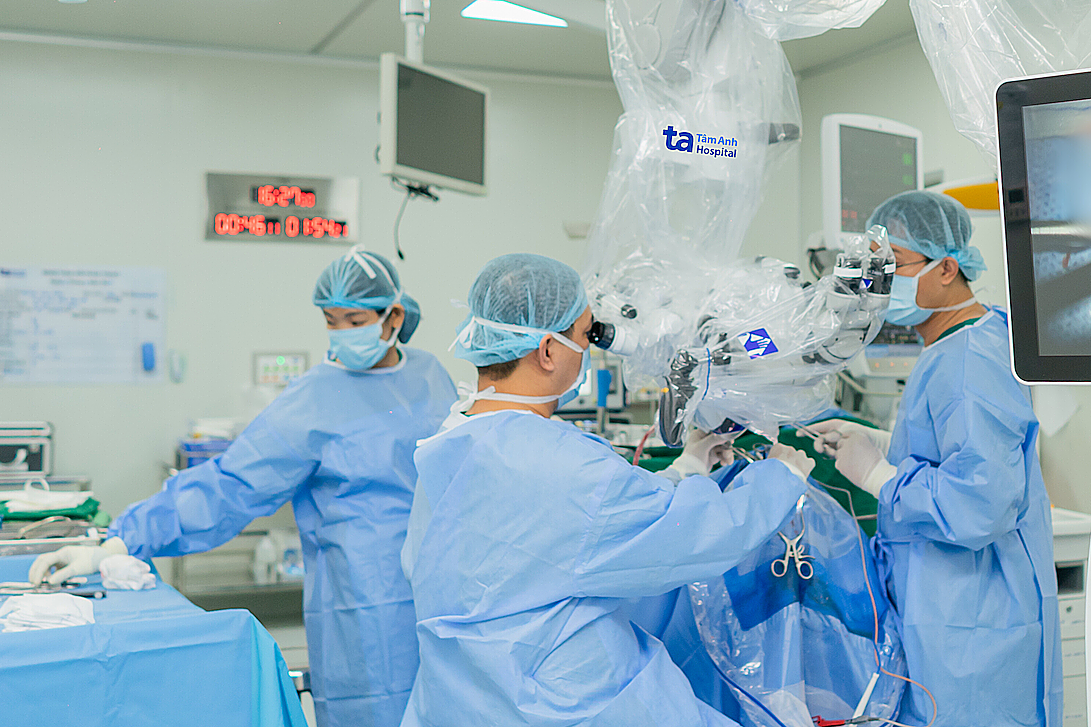The trigeminal nerve, also known as the fifth cranial nerve, has three main branches that control facial sensation: the ophthalmic, maxillary, and mandibular branches. These branches transmit sensations from the forehead, cheeks, jaw, and oral cavity to the brain.
Dr. Phan Duy Quang, from the Neuroscience Center at Tam Anh General Hospital in Ho Chi Minh City, explains that trigeminal neuralgia often results from blood vessels compressing the fifth cranial nerve at its root. Tumors, viruses, injuries, or even minor procedures like tooth extractions can also cause this compression. The pain can be easily mistaken for a toothache, sinusitis, or migraine, leading to misdiagnosis and prolonged suffering.
Here are some characteristic symptoms of trigeminal neuralgia.
Sharp, electric shock-like pain on one side of the face
The condition typically begins abruptly with an electric shock-like, burning, or stabbing pain, affecting only one side of the face. The pain usually occurs in the cheek, teeth, jaw, or around the eye, depending on which nerve branch is affected. Each episode lasts from a few seconds to about two minutes but is intense. It can occur spontaneously or be triggered by light touch, talking, chewing, brushing teeth, shaving, applying makeup, or even a gust of wind.
Fixed pain location
A hallmark of trigeminal neuralgia is the pain's consistent location, recurring in the same facial area. The pain typically remains within the sensory distribution of one of the three branches: the forehead, cheek, or lower jaw. In some cases, it might spread from the cheek to the temple or around the eye, or down to the chin, but it always stays on one side of the face.
 |
A surgeon removes a tumor compressing the trigeminal nerve. Photo: Tam Anh General Hospital |
A surgeon removes a tumor compressing the trigeminal nerve. Photo: Tam Anh General Hospital
Episodic pain
According to Dr. Quang, trigeminal neuralgia occurs in episodes lasting from a few days to several weeks. The frequency and duration of these episodes can increase over time, severely impacting daily life.
Pain accompanied by psychological responses
In some instances, patients may become anxious about activities that can trigger the pain, such as brushing their teeth, washing their face, eating, or talking. This can lead to increased anxiety, difficulty sleeping, and a significant decline in quality of life.
Unresponsive to common painkillers
Dr. Quang notes that trigeminal neuralgia rarely responds to standard painkillers. Patients often require anticonvulsant medication to manage their symptoms. Incorrect medication or delayed treatment can lead to chronic, drug-resistant pain that is more difficult to control. Individuals experiencing severe, recurring facial pain that doesn't respond to typical painkillers should consult a neurologist at a reputable medical facility. Early diagnosis helps differentiate trigeminal neuralgia from other conditions like sinusitis, toothaches, temporomandibular joint disorders, or brain lesions.
For diagnosis, neurologists conduct neurological examinations, checking for trigger points, combined with MRI scans of the brain and skull base. These scans assess for compression, tumors, vascular malformations, or other pathologies that might irritate the trigeminal nerve, enabling accurate diagnosis and treatment. Depending on the cause, pain intensity, and underlying health conditions, doctors may recommend pain management medication, physical therapy, nerve blocks, radiofrequency ablation, or microvascular decompression surgery.
Phuong Pham
| Readers can submit questions about neurological conditions here for answers from doctors. |












